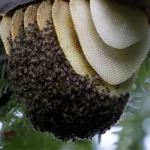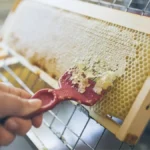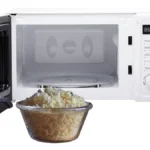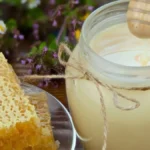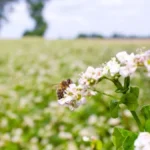In this article, I will show you how to clean propolis using a few methods I have developed over the years. We will first look at what propolis is, and then at how to clean propolis and produce tinctures and medicines for ourselves.
What’s Propolis?
The ancient Greek words Pro for in front and Polis for the city are relatively apt for the resin wall bees build in front of their “city” hive to allow them to protect the hive from invaders.
Propolis is a mixture of plant resins, fibers, other objects, and wax. Bees will forage in the wild looking for sticky things that they then harvest and bring back to the hive. This is mixed with old wax, plant fibers, sticks, small stones, and various other materials to create a firm, but flexible sealing material that can be used to fill holes in the hive, reduce the size of the hive entrance, and close small cracks where hive beetles and ants can reside – in other words, places that are less than bee space – the smallest space into which bees can crawl.
Why Is Propolis Medicinal?
When we consider plant resins this refers to the resins plants produce to protect themselves against disease. If you imagine a plant that has just been bitten by a herbivore, the bite creates a wound – the plant must now ensure that bacteria, fungi, viruses, insects, and so on do not enter the wound. Much like us, it produces a scab. We have an immune system inside us – plants do not. Hence plants produce antibacterial, antifungal, and insecticidal compounds at the point of the wound to keep pathogens out.

Bees go out and find plants that have wounds and they collect the scabs that the plants form. What this means is that bees are able to collect the combined phytomedicinal (phyto=plant medicinal needs no explanation) toolkit of all the plants within the 3-4 mile propolis foraging range of the hive. This can comprise hundreds, or in areas such as mine, thousands of species of plants, and the biochemical complexity of the propolis is incredible.
The result is that propolis is a goldmine of medicinal compounds that include antimicrobials (kill microbes) antivirals (kill viruses) healing compounds (encourage the growth of cells) and various other medicinal compounds.
Read more about Do Azaleas Attract Bees? &; The Secret Source Of Psychedelic/Poisonous Honey
How To Clean Propolis So We Can Use It As A Medicine
Depending on how you harvest propolis, it can be filled with all sorts of strange things. I have performed thousands of hours of research analyzing propolis over the years, and have found it to contain pebbles, bones of rats and birds (if bees kill a rat or mouse that enters the hive, they entomb it in propolis), sticks, nails (from beehives), pieces of plastic, fibers of plants, wood chips, and countless other unexpected things. To produce medicinal-grade propolis we need to remove this stuff and extract the plant resins. This article shows you how to clean propolis to produce purer gunk-free products.
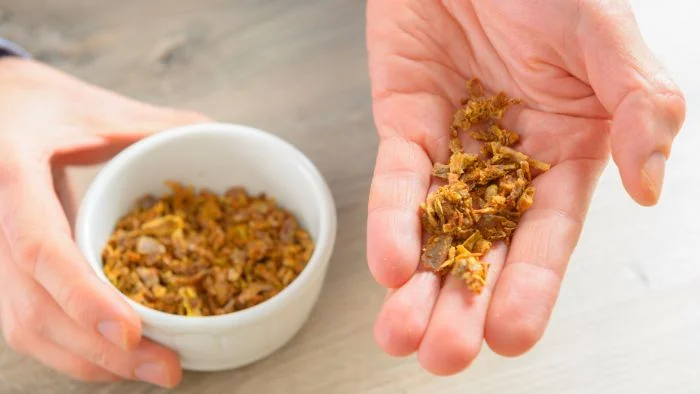
How To Clean Propolis Using Alcohol Extraction
My favorite method of extracting propolis is a 50-70% ethanol alcohol extraction. Ethanol in water is an interesting solvent as it has the ability to extract both products that are polar and non-polar. Basically, this means that it can extract pretty much all of the things you want in the propolis, and leaves behind the sticks, beeswax, gunk, and stones.
How To Clean Propolis Using A Gem Tumbler
If you are able to buy a small gem tumbler such as this one from National geographic you would be able to easily clean propolis. First, you will need to take your propolis and cut it into small cubes. Freeze the propolis in your fridge freezer. This makes it brittle and hard. You can now place the propolis in a cloth bag and gently wack it with a plank or wooden mallet. This will break it into smaller pieces.

Take the small broken propolis pieces and place them in a cup. Place half a cup or so in the gem tumbler. Place half a cup of the highest percentage alcohol vodka you can find into the tumbler. There are Vodka products on the market that can be as high as 70% alcohol, but these are hard to come by. Anything above 40% alcohol will work well.
Do not use non-potable alcohol – these alcohols tend to have poisons added to them to ensure that they do not get consumed by humans. This means that if you make a tincture with such alcohol it will be poisonous.
Run the gem tumbler for a week. This gives the propolis plenty of time to dissolve into the alcohol-water mix (vodka) that you have put in the tumbler.
How To Process Propolis After Tumbling
After you have run the tumbler for a week, remove the tumbler and pour the propolis alcohol mix through a cheesecloth filter. This removes all the course gunk and sticks from the tincture and you now have a pretty clean filtered product. If you wish to be fancy you could filter it through a coffee filter as well. This may take a while and may clog a bit.

What To Do With Propolis Tincture
Now you have figured out how to clean propolis! You have now created a clean propolis tincture. There are many things you can do with this. You can use it straight – a few drops on a cut will help heal it. However here are a few fun products to make:
Propolis Acne Cream
I must say that this is just a tip. It is not medical advice, so use it at your own risk. A friend of mine had bad acne and prepared a mixture of 1 part propolis tincture, two parts Jojoba oil and two parts cleaned beeswax (As a beekeeper you may have your own beeswax).


Melt the beeswax in a double boiler. When melting beeswax you always use a pot of boiling water and place another pot in this to melt the wax. This avoids fires and disasters. Hot beeswax is an evil thing.

Place the other ingredients in the melted wax just after it has finished melting and stir rapidly. Remove the double boiler from the warm water and place it in a cold water pot. This rapidly cools the mixture and as you stir it, it will form an ointment.
The ointment, applied in the evening works well at reducing inflammation. If you have a dark complexion, it helps to prevent dark spots from forming.
Propolis toothpaste
Propolis has a lasting antimicrobial effect in the mouth. This is why companies have made Propolis toothpaste. I just take simple Colgate Original toothpaste and put it on the toothbrush. Then I put a squirt of tincture in my mouth and brush my teeth. I reckon this probably has more propolis than any commercial product. Every now and then if something makes your gums bleed this helps to stop it from happening.


How To Use Raw Propolis
When we look at how to clean propolis, every now and then the bees make a big blob of relatively clean propolis. There is a thing I love to do with this. First taste the propolis – to do this, bite a small piece and chew it for about an hour like chewing gum. If it tastes nice, you can use it to make natural chewing gum!
Take the double boiler we mentioned before and slowly melt your propolis in boiling water. The water transfers heat through the wall of the double boiler pot and within a few minutes, your propolis will become soft and pliable. Add a bit of honey to this, and mix with a fork until it forms an emulsion. Pour the emulsion into something like this mini ice cube tray. The little cubes of propolis honey make a great chewy snack, and you can chew them for hours. The great thing is you can swallow the gum at the end!!

In Conclusion – How To Clean Propolis
I hope this has shown you how to clean propolis and what to do with the products that you produce. Propolis is, in my opinion, probably one of the most valuable natural compounds we have, and definitely the highest-value product (bar bee venom) in the hive.
This is literally the black gold in your beehive, and learning how to use it to enhance your health is an important part of becoming a beekeeper!

Dr. Garth A. Cambray is a Canadian/South African entrepreneur and beekeeper with 28 years of experience in apiculture and specializes in adding value to honey. His Ph.D. research developed a new advanced continuous fermentation method for making mead that has resulted in a number of companies globally being able to access markets for mead. His company, Makana Meadery, exports honey mead to the USA where it is available to discerning connoisseurs. He has also developed technologies to commercially manufacture organic honey vinegar in Zambia for export globally. He holds a few patents globally in the ethanol industry and believes in technology and knowledge transfer for human development and environmental sustainability. One of his proudest achievements is the fact that the wind farm he started at one of his old apiary sites has essentially made his hometown carbon neutral.

